New Everytown report offers proposals to fight gun violence
Everytown announced guidance for governors, in a report exclusive to ABC News.
In the absence of action on gun control from the federal government, a new report by Everytown for Gun Safety, first obtained by ABC News, proposes actions governors can take to combat gun violence in their states.
“Governors are on the front lines of our nation’s gun violence crisis and there are meaningful actions they can take right now to save lives,” said Monisha Henley, senior director of state affairs at Everytown for Gun Safety. “There is not a single state in the country that is immune from the gun violence that takes more than 110 lives a day and it’s time for leaders to act.”
Despite several mass shootings last month, it is unclear whether Congress will pass gun reform legislation, even with President Joe Biden's call on the body to act.
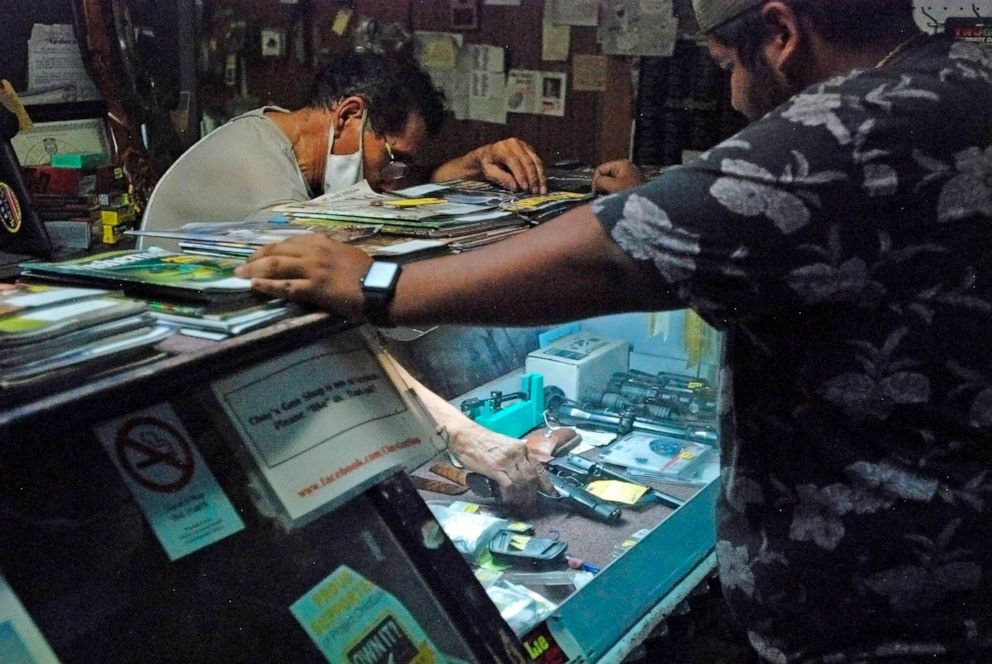
The report offers three kinds of solutions:
Blocking gun access for people who pose a danger
Governors can launch an education strategy and government task force that would increase the use of extreme risk orders, which allow law enforcement, and in some cases individuals, to ask a court to remove guns from someone at serious risk of harming themselves or others, also banning them from purchasing new guns.
Nineteen states have extreme risk laws, but governors can expand the use of these laws. The public should also be educated about these laws and how they work to increase their effectiveness, according to the report.
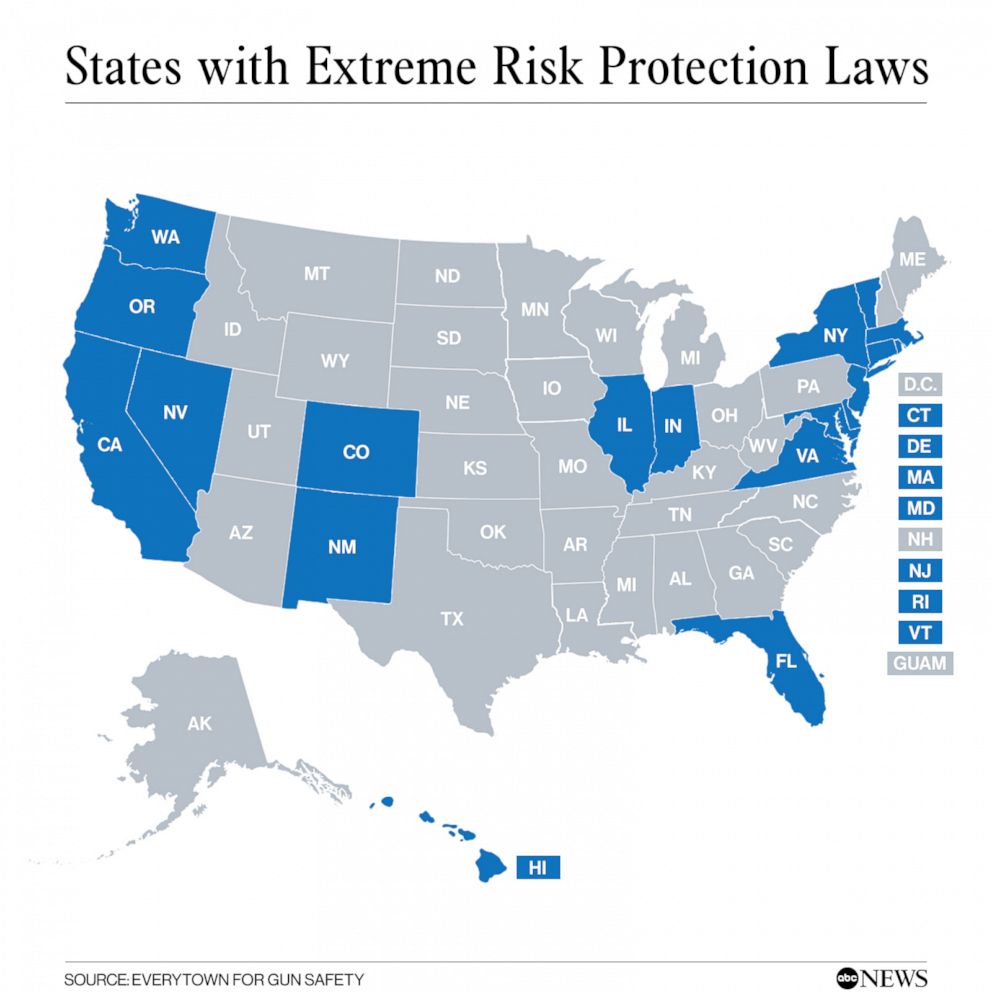
States could launch a task force to educate state agencies and establish protocols for identifying these cases and intervening quickly and also launch a tip line to report concerning behavior.
While 23 states require domestic abusers to surrender their fire arms after a conviction or restraining order, the report said enforcement is "insufficient" in many states. Everytown recommended providing funding and working with courts and law enforcement to build processes and track gun removal consistently.
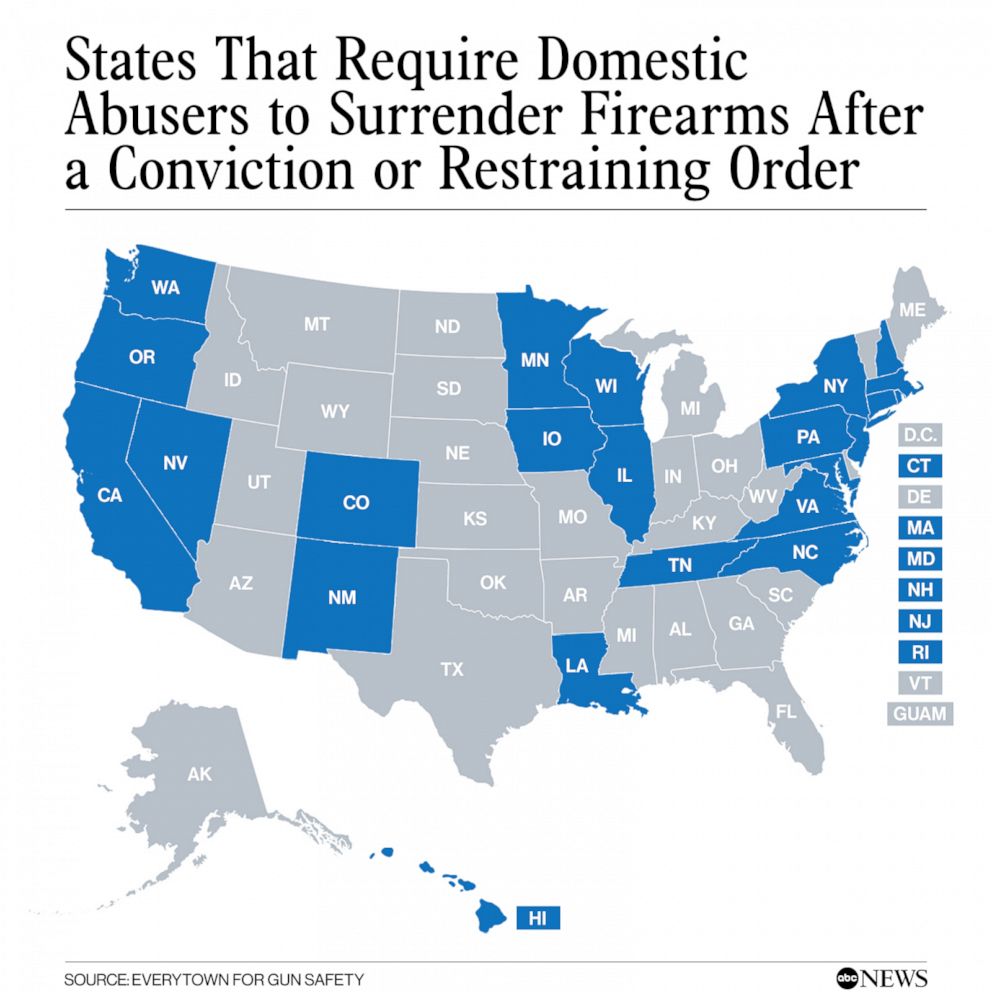
One expert told ABC News that background checks for all purchases would be needed to implement this kind of prohibition.
"Right now, the so called 'gun show' loophole in many states allows people to purchase firearms from private parties without a background check. And of course, if that's the case, then it wouldn't matter if they were prohibited or not," said Amy Barnhorst, director of the BulletPoints Project at UC Davis Health, which develops firearm violence prevention curriculum for healthcare providers.
The report also suggests governors launch a removal program with a real-time notification system for gun owners who become prohibited.
States should educate gun owners to secure firearms, as there is strong evidence suggesting school shooters have exploited unsecured and accessible guns. Everytown estimates that 4.6 million children in the U.S. live in homes with at least one loaded, unlocked firearm.
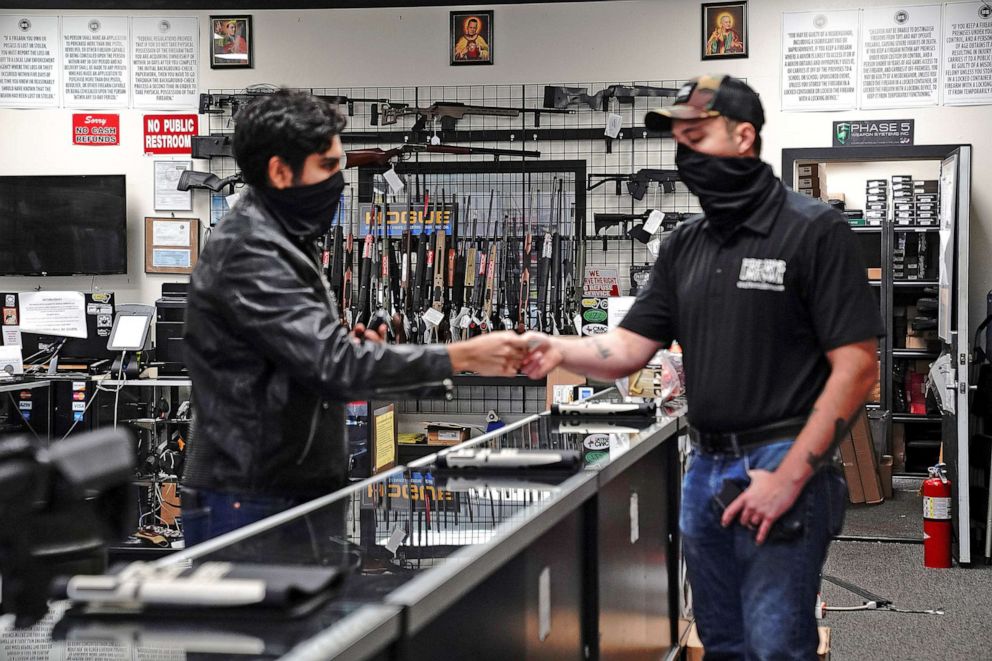
People leaving their unsecured firearms in cars has also become a particular problem, Daniel Webster, director of the Center for Gun Policy and Research at Johns Hopkins University, told ABC News in an interview.
"Virtually every city that has data has shown huge increases in theft from motor vehicles," Webster said. Webster said people shouldn't be leaving guns in cars at all, or if they do the gun should be secured some way, like bolting them to the floorboard.
Uplifting community violence intervention
Gun violence has an exceptionally large impact on historically underfunded neighborhoods, with half of all gun homicides in 2015 happening in just 127 cities. To minimize violence in these communities, governors need to focus on street outreach and other community-led programs, according to the report.
Violence intervention strategies that could make a difference include street outreach, group violence intervention and hospital-based interventions, which the report called "a core piece of the solution, helping to break the cycle of violence."
While attention has increased for these programs, governors can focus on increasing funding and resources to these groups.
Holding the gun industry accountable
Licensing gun dealers can also allow the state to ensure they are following safe practices. Fifteen states have licensing systems that Everytown said can be leveraged and improved. Launching reviews of these systems could help identify gaps.
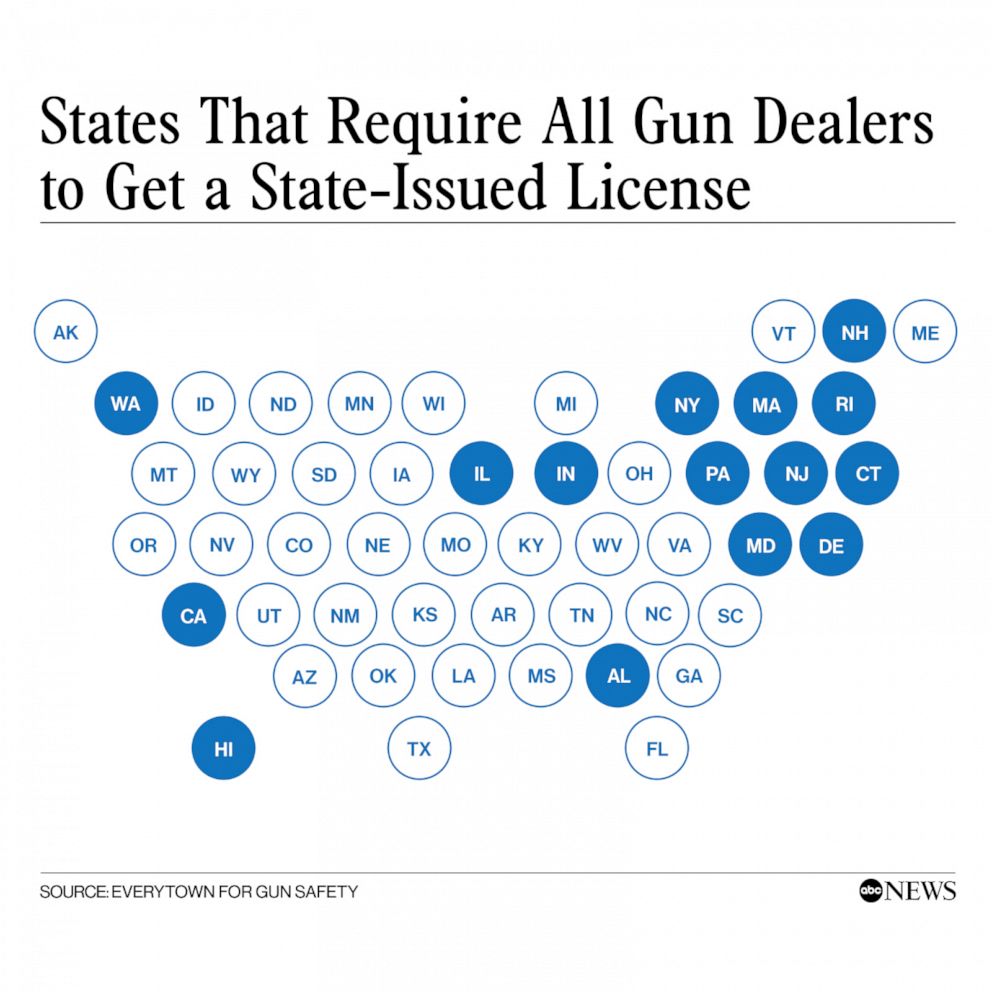
States should also publish regular reports on their work to promote public awareness of what a strong system looks like and expose bad actors.
To limit gun trafficking, governors can build a data intelligence tool that identifies illegal guns and their sources. Even in states with the strongest firearm laws, gun trafficking results in guns flowing in from states with weaker laws.
Officials should also publish information about dealers and other industry actors who fuel these networks, Everytown said.
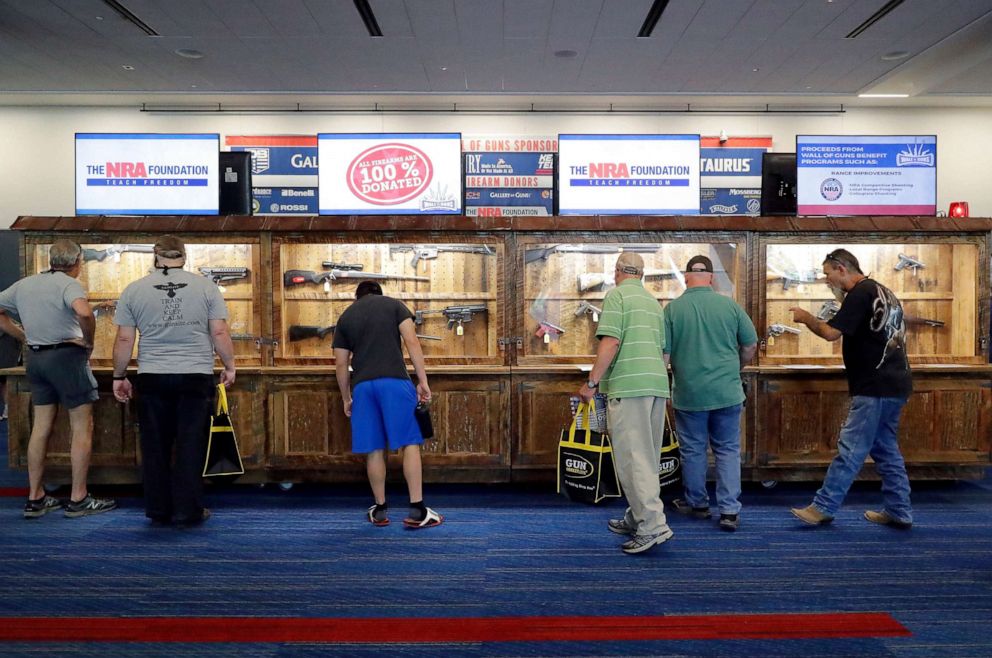
The report also criticized gunmakers' refusal to build safety features into firearm technology, despite the rise in unintentional shootings. There have been 106 unintentional shootings by children this year, as of May 27.
In the absence of oversight from federal consumer protection law, Everytown said three states have made their own laws, requiring manufacturers to add childproofing features to any new handgun models sold in their states. Governors can add similar mandates, especially in states with robust consumer product powers.
Governors and attorneys general can also explore taking manufacturers to court where their products and practices are causing problems.
Disclosing the manufacturer and retailer of guns used in shootings would also put industry actors on notice that their guns are being used in crimes and informs the public who profits off of gun violence, Everytown said.
Webster also called on states and the federal government to make more data on guns available.
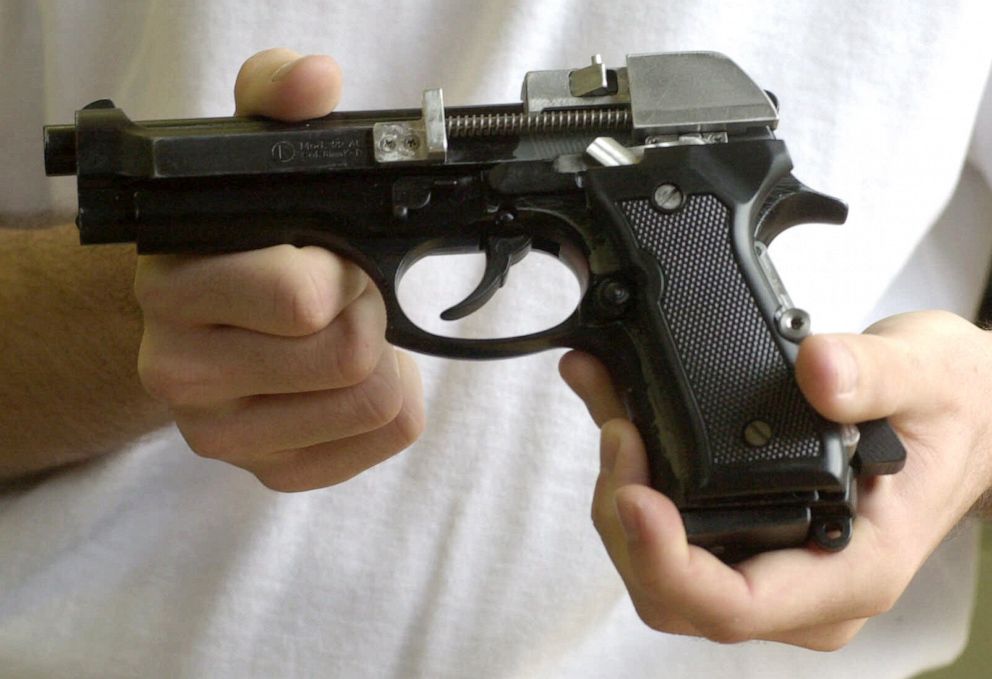
Requiring handgun purchasers to be licensed is the policy that had the greatest impact on all types of gun violence, reducing homicides, suicides and mass shootings, Webster said.
Barnhorst said online monitoring could also be a great place to invest to help prevent mass shootings.
"But right now, I'm not sure that we have the resources and the infrastructure to be monitoring all social media accounts, to discern which ones are the ones that actually have actual high risk of perpetrating an incident and then to find those people and intervene," Barnhorst said.
Webster said while solutions in the report are sound, almost all of them would not have an immediate effect.
"If we only look in a very short term manner, we're not going to get very far," Webster said.
"What we need to demand from policymakers is not only immediate action, but also a long term vision," he added.




